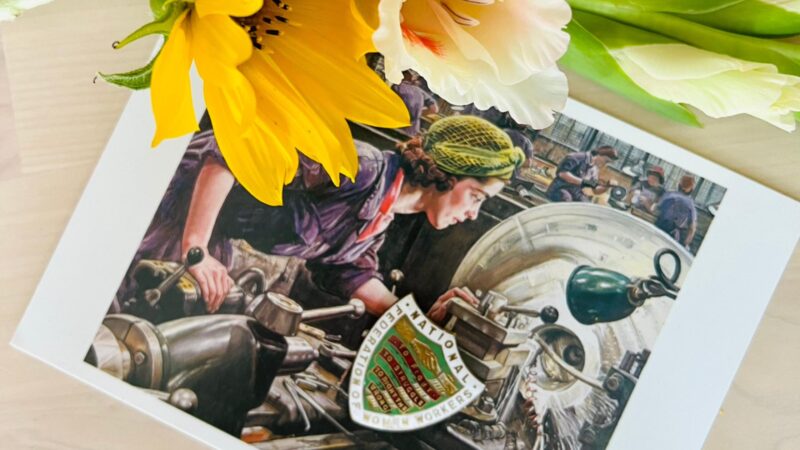Jessica Morden Jessica Morden - Labour MP for Newport East, PPS to Keir Starmer and Shadow Minister for Wales

Big thanks to the wonderful Pete and Jackie Strong from Caldicot for my National Federation of Women Workers badge and the fabulous picture postcard of Ruby Loftus.
Pete also added this potted history of the NFWW in Newport to the parcel, which you might find interesting.
The National Federation of Women Workers (NFWW) was a trade union in the United Kingdom of Great Britain and Ireland active in the first part of the of the 20th Century. Instrumental in winning women workers the right to a minimum wage for the first time, the NFWW broke down barriers to women’s membership in trade unions in general.
In contrast to the numerous small craft unions which organised women workers in the late 19th Century, the NFWW was established in 1906 as a general trade union, open to all women across a range of industries where women’s work predominated, where wages were low and where trade unionism had to that time been unsuccessful.
The Scottish suffragist, Mary Macarthur, played a key role throughout the NFWW’s existence, leading campaigns against sweated industries, mobilising public support for striking members, lobbying for legislative reform, and engaging with the broader labour movement.
The NFWW played an important role in organising women munitions workers in Newport during the First World War. Its leading organiser was a suffragist and Labour Party member – Margaret Meggitt who lived in Eveswell.
In 1921 the NFWW amalgamated into the National Union of General Workers (now the GMB) as that organisation’s women worker’s section.
